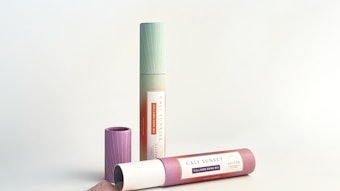Read previous Euromonitor reports here.
At 4.7%, hair care continued to grow below the industry average of 5.0% in 2014, but the good news is that it picked up from 4.5% in 2013, favored by all regions, with the exception of Asia Pacific and Western Europe. Latin America accounted for 45% of the global absolute growth in hair care, thanks to Brazil. The fact that North America is improving spells good news since, regionally, it ranks highest in terms of per capita spending on hair care.
Shampoos and conditioners, each with a contribution of over 30%, accounted for more than 60% absolute growth in hair care globally. More targeted offerings with pronounced health and beauty benefits helped to drive growth in these categories. While efficacy in the form of targeted solutions is increasing in importance, hair care continues to be mass orientated as consumers show a greater preference for value products. Going forward, success will continue to involve combining mass offerings with efficacy.
Health Focus Gains Prominence
Increasingly, hair care solutions are looking to incorporate more sophisticated solutions to help create healthy-looking hair. This involves addressing hair care concerns such as damaged and limp hair, but, as understanding of hair care widens, it is increasingly believed that including scalp health benefits plays an important part in developing more efficacious hair care products.
Providing nourishment to the scalp is said to help strengthen hair follicles and contribute toward healthy and strong hair. A greater number of shampoos and conditioners are now claimed to include rare and exotic oil that provide necessary nutrition to the scalp, but, additionally, there are dedicated formats such as hair masks, serums and other hair treatments to benefit scalp health.
Reducing Exposure to Sulfates
As consumers become more aware of scalp health, there are good opportunities for products that reduce exposure to sulfates in regular shampoos. Sulfate is an ingredient responsible for creating lather in shampoos, but sulfate is said to strip hair of its natural oil, adding to the problem of dry scalp.
Dry shampoos are positioned as products that can be used in between wet shampoos and thus help to reduce exposure to sulfates in regular shampoos. While using dry shampoos, by default, can benefit scalp health, some dry shampoo brands are incorporating scalp health claims to reinforce the benefit.
Like dry shampoos, cleansing conditioners, which are sulfate-free shampoos, offer an alternative that can also benefit scalp health. Both dry shampoos and cleansing conditioners have strong potential among consumers with African hair types, since consumers of that origin are said to tend to have dry scalps and, therefore, can particularly benefit from replacements for regular wet shampoos.
Textured Hair Solutions for the Multicultural Beauty Space
In terms of developing products in compliance with consumer needs based on their ethnicity and cultural preferences, perms and relaxants have seen good growth. In 2014, perms and relaxants grew by 7%, slower than the 14% seen in 2013. However, in 2013, growth had peaked after the old products were replaced with safer ingredients in Latin America.
Most of the sales in this category are generated in Latin America and the Middle East and Africa, accounting for nearly 80% of global sales. Going forward, growth in perms and relaxants will be accounted for by Latin America. In order to tap into the expected growth in perms and relaxants, L’Oréal acquired Brazilian company Niely in 2014.
Hair Care Remains a Mass Offering
Despite the increasing focus on functionality and efficacy, hair care continues to be mostly mass, with this segment accounting for nearly 90% of global hair care sales. Going forward, premium hair care is projected to grow at a slightly faster pace of 2.0% CAGR, compared to a 1.8% CAGR for mass hair care, but, in absolute terms, mass hair care is projected to account for 88% of the projected absolute growth in hair care between 2014 and 2019.
Unlike skin care, consumers are less willing to pay a higher margin for hair care, as skin is more closely linked to beauty than hair. The relatively lower margin in hair care, however, can be compensated for by boosting volume growth in both developed and developing markets.
Increasing Frequency of Hair Care Products in Mature Markets
Driving volume growth in developed markets is a greater challenge given the level of market maturity. Product launches with sophisticated claims in novel formats have helped to drive value growth in terms of higher unit prices, but these products are also designed to add extra steps to the existing beauty routine, thus increasing the frequency of hair care product usage.
One interesting launch is L’Oréal’s Fribrology, a range targeted towards creating fuller-looking hair that includes shampoos, conditioners, masks, serums and boosters. Using all the different products from the range is said to maximize efficacy.
Penetration of Shampoos in Developing Markets
While driving growth in developed markets involves adding new steps to the beauty routine, in developing markets there is the scope to improve penetration by increasing the frequency of shampoo usage.
In Brazil, volume per capita of shampoo was 1,022 ml in 2014, compared to 105 ml in India. In markets such as Nigeria and Egypt, the volume per capita usage of shampoo is even lower than in India. Entrenching usage of shampoos more deeply as part of a regular grooming routine in these markets could help to drive volume growth.
Conclusion
Despite efforts to invigorate a relatively mature hair care market, the category continues to under-index the industry average. Value growth in hair care has been hampered by an upwardly inelastic value margin. There is, however, hope in some untapped zones in emerging markets, where the frequency of shampoo usage continues to be low.
Developing a deeper penetration in such markets, in addition to tapping into white spaces in developed markets, can contribute to the global momentum for hair care growth and may even help to overtake the industry average.










